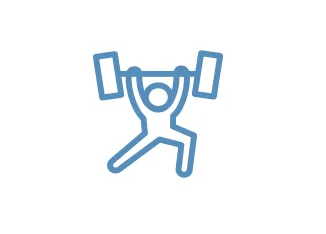SHIN SPLITS
Fayetteville Shin Splints treatment
When we put stress on our shins, as we do during running or exercise, the connective tissues that attach our leg muscles to our tibia can get inflamed. This inflammation is caused by tiny fractures in the muscles, tendons and bones of the shin. This pain is called “shin splints,” and although it usually goes away within a few days, it’s important to monitor to ensure that it doesn’t progress into a stress fracture.
WHAT DO SHIN SPLINTS FEEL LIKE?
Symptoms of Shin Splints
Pain on the inside or outside of the lower leg over the tibia
Pulling apart in the lower leg or shin
Tenderness or soreness in the lower leg
HOW DO SHIN SPLINTS HAPPEN?
Signs of Shin Splints
Mild grades of an ACL injury will mean that the ligament has been stretched, but still offers stability for the knee. The ACL can stretch and become loose, which is known as a partial tear. A full tear of the ligament is the most severe state and will require surgery to repair. In any instance, ACL injuries happen in largely the same ways.
Right Arrow Bullet
Shifting to more intense, more frequent, or longer workouts or runs
Working out or running without proper stretching
Flat feet or inadequate footwear
Poor posture
HOW CAN WE HELP?
alleviating shin splint pain
Gait & Foot check
Your Fayetteville chiropractor can check your feet and gait for flat-footedness or imbalance when during running and walking.
Extremity Adjustments
Adjustments can align the legs and body to help a patient whose shin splints are caused by gait, posture or foot issues.
HOW CAN ADJUSTMENTS AND LIFESTYLE CHANGES HELP?
BENEFITS OF CHIROPRACTIC
Reduce pain
By reducing the inflammation, your Fayetteville chiropractor can help reduce your pain and give your body space to heal.
Enhance performance
When you see how your technique can be improved, you can begin to enhance your performance in your favorite activities.
SOME FAQ'S
Who's most at risk for shin splints?
Who's most at risk for shin splints?
Generally speaking, people who run or hike long distances or who jump as part of their sports or activities are the most at risk for shin splints. The most commonly-affected groups of people include runners, hikers, gymnasts, dancers, and even military recruits.
Shin splints are also more likely to occur in people who are not that physically active, and then begin exercising frequently and intensely over a short period of time. However, shin splints may also happen in experienced athletes who have made major changes to their training routines. For example, if you’re a 10K runner and start training for a marathon, the extra miles you’re putting on your legs could lead to shin splints if you’re not careful.
How to prevent shin splints – Our recommendations
How to prevent shin splints – Our recommendations
Whether you’ve never had them before or you’ve had shin splints in the past and want to avoid them in the future, there are a few things you can do to reduce your risk of developing shin splints:
Always increase activity levels gradually – Whether you’re new to fitness or an experienced athlete, make sure you increase your activity levels in a controlled, gradual way. If you overdo it, you’re more likely to get shin splints or injure yourself in some other way.
Listen to your body, don’t “push through pain” – Pain is your body’s way of telling you that something is wrong. If your legs (or any other part of your body) is hurting after exercise and something doesn’t feel right, you should get help from a medical professional, such as the team at Thrive Wellness Center. We can get to the bottom of the issue, and make sure that you get the treatment you need to get back to your active lifestyle.
Replace your athletic shoes regularly – Worn-out shoes don’t offer proper support or padding when you run and jump. Athletic shoes should be replaced about every year. Running shoes, in particular, should usually be worn for no more than 400-500 miles.
Exercise on softer surfaces – Instead of always running or exercising on asphalt or on a track, consider running in the grass, on a trail, or in a field instead. Exercising on softer surfaces can help reduce impact, which lowers your risk of shin splints.
Stay at a healthy weight – The more you weigh, the more stress is placed on your joints, bones, and muscles when you exercise. Everyone’s goals and fitness levels are different, of course. But staying at a healthy weight can help reduce your risk of shin splints, and improves your overall athletic performance, too.
What activities are good for those with shin splints?
What activities are good for those with shin splints?
If you’re an athlete or just passionate about fitness, we know that it can be hard to stop exercising entirely. But if you have shin splints, you should definitely avoid high-impact activities that involve things like running and jumping, and reduce your overall activity level a bit.
Instead, you should turn to lower-impact exercises that do not involve repeated stress on your shins. A few great activities for people recovering from shin splints include:
Riding a bike or stationary bike
Using an elliptical
Swimming laps
Using a rowing machine (erg)
Walking
Inline skating (rollerblading)
Weight lifting and strength training
If you’re recovering from shin splints but you want to stay active, incorporating one or more of these exercises into your routine as you recover can help you maintain your fitness while your shins and legs heal.







